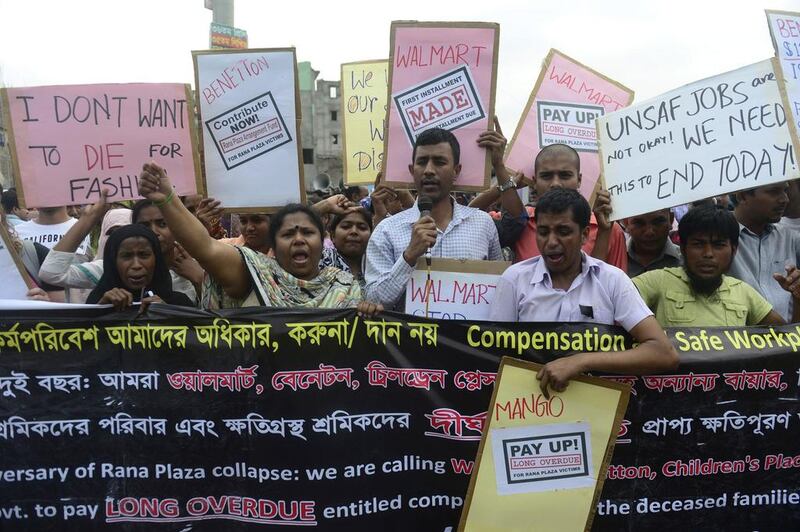It’s been two years since an eight-storey garment factory collapsed in the Bangladeshi capital Dhaka, killing more than a thousand workers and injuring hundreds. It was tragic, of course, but the Rana Plaza disaster’s significance went far beyond being one of the worst industrial accidents in recent memory. It forced the world – especially western clothes brands and their millions of eager consumers – to confront the human costs of the global fashion industry.
In what was seen as a turning point, several of the biggest retailers of the cheapest chic pledged to work with the Bangladeshi authorities to ensure workers’ safety and rights. There were promises of investment in the buildings that serve as factories, employing four million workers. Horrified consumers pledged to be more mindful of the supply chain that enabled them to be on-trend. April 24, when the building collapsed, was declared Fashion Revolution Day and it is observed in 71 countries with the hashtag #whomademyclothes.
But has anything really changed? There have been some reforms to Bangladesh’s garment industry. According to Srinivas Reddy, Bangladesh director for the International Labour Organisation, fire and safety assessments have been completed for nearly 75 per cent of the 3,508 factories identified as exporting clothing from Bangladesh. But crucially, these achievements miss both the target and the overall objective.
The assessments were supposed to have been complete by the second anniversary so that improvements could have been well in hand. More worryingly, NGOs report that factory owners still intimidate workers who dare to question safety and the authorities are said to be dragging their feet on tightening regulations.
Part of the problem is that Bangladesh rose to be the leading fashion supplier of the global wardrobe largely because of low wages and lack of regulation. Now it needs to move to a more value-added and better paid sector of the fashion trade. The race to the bottom is mostly reductive, not to mention dangerous.





